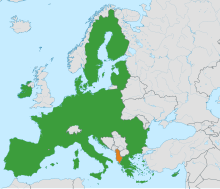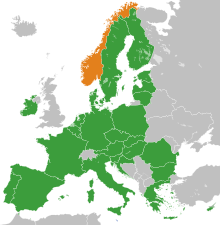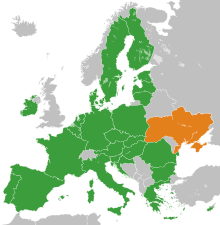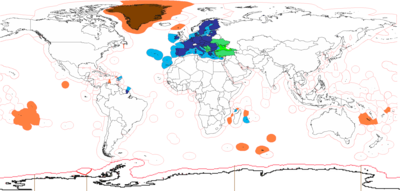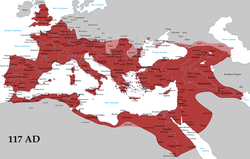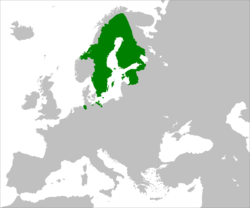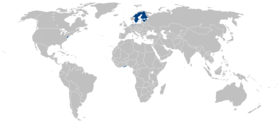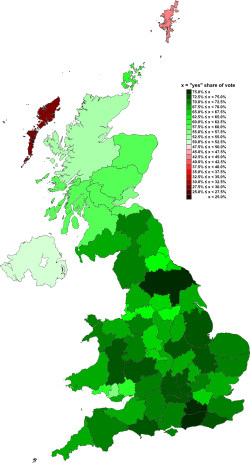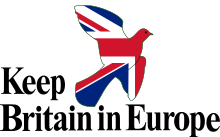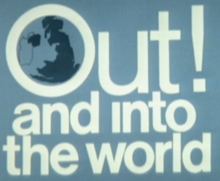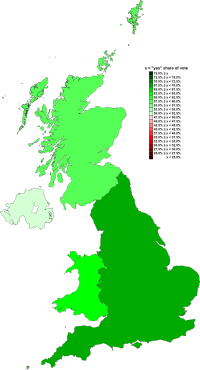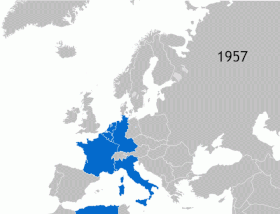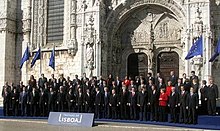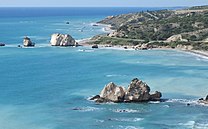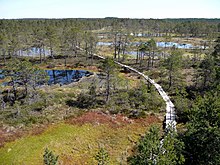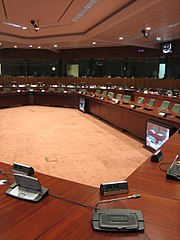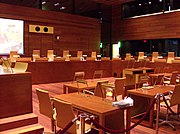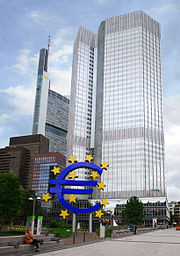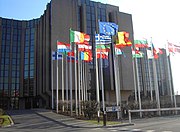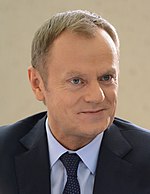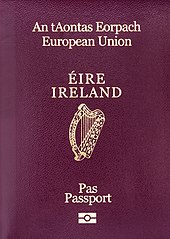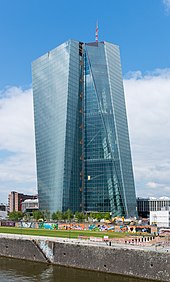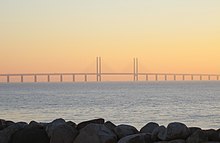
So what next after brexite there what I think
The Scott and the Irish will hold their own referendum to separate them self from Britain so they can be a part of the Eu this will happen before any other Union members separate.
The barbarian of the North will leave The next nation to succeed are the Scandinavian country Sweden begin the first one.
The main land will stay generally the Eu will reconfigure and try to get turkey to join the union to replace Britain and a few other
There are five recognised candidates for membership:Turkey (applied in 1987), Macedonia (applied in 2004),Montenegro (applied in 2008), Albania (applied in 2009) and Serbia (applied in 2009). All candidate countries except Albania and Macedonia have started accession negotiations.
Russia will try to get some of the Eu nation to join the eurasion Union plus non Eu nation.
According to an Eastern Partnership strategy, the EU is unlikely to invite any more of its post-Soviet neighbours to join the bloc before 2020. However, in 2014 the EU signed Association Agreements with Georgia, Moldova, and Ukraine, and the European Parliament passed a resolution recognising the “European perspective” of all three post-Soviet countries.
The barbarian of the, South the Muslim will blend into the Eu by turkey joining
Bosnia and Herzegovina and Kosovo*, whose independence is not recognised by five EU member states, are recognised as potential candidates for membership by the EU. Bosnia-Herzegovina has formally submitted an application for membership.
Kosovo has a Stabilisation and Association Agreement (SAA) with the EU, which generally precedes the lodging of membership application.
The three major western European countries which are not EU members, Iceland, Norway and Switzerland, have all submitted membership applications in the past, but subsequently froze them
Current agenda

Map of the EU potential candidate states in the Balkans, with the date of the latest step in the process.
The present enlargement agenda of the European Union regards Turkey and the Western Balkans. Turkey has a long-standing application with the EU, but their negotiations are expected to take until at least 2023. As for the Western Balkan states, the EU had pledged to include them after their civil wars: in fact, two states have entered, four are candidates and the others have pre-accession agreements.
There are however other states in Europe which either seek membership or could potentially apply if their present foreign policy changes, or the EU gives a signal that they might now be included on the enlargement agenda. However, these are not formally part of the current agenda, which is already delayed due to bilateral disputes in the Balkans and difficulty in fully implementing the acquis communautaire (the accepted body of EU law).
|
 |
Albania |
Candidate |
2009-04-01 (SAA) |
2009-04-28 |
2014-06-24[6] |
– |
– |
– |
 |
Bosnia and
Herzegovina |
Applicant |
2015-06-01 (SAA) |
2016-02-15[12] |
– |
– |
– |
– |
 |
Kosovo
(status disputed)[13] |
Potential
candidate |
2016-04-01 (SAA)[14] |
– |
– |
– |
– |
– |
 |
Macedonia |
Candidate |
2004-04-01 (SAA) |
2004-03-22 |
2005-12-17 |
– |
– |
– |
 |
Montenegro |
Negotiating |
2010-05-01 (SAA) |
2008-12-15 |
2010-12-17 |
2012-06-29 |
2013-06-27 |
2/22 of 33 |
 |
Serbia |
Negotiating |
2013-09-01 (SAA) |
2009-12-22 |
2012-03-01 |
2014-01-21[15] |
2015-03-24 |
0/2 of 34 |
 |
Turkey |
Negotiating |
1964-12-01 (AA) |
1987-04-14 |
1999-12-12 |
2005-10-03 |
2006-10-13 |
1/15 of 33 |
- Jump up^ Excluding Chapters 34 (Institutions) and 35 (Other Issues) since these are not legislation chapters.
Recognised candidates
There are at present five “candidate countries”, who have applied to the EU and been accepted in principle.[16] These states have begun, or will begin shortly, the accession process by adopting EU law to bring the states in line with the rest of the Union. While most of these countries have applied only recently, Turkey is a long-standing candidate, having applied in 1987 and gaining candidate status in 1999.[17] This is due to the political issues surrounding the accession of the country.
Albania
Albania applied for EU membership on 28 April 2009. Officially recognized by the EU as a “potential candidate country”, Albania started negotiations on a Stabilisation and Association Agreement (SAA) in 2003. The SAA was signed on 12 June 2006 and entered force on 1 April 2009, thus completing the first major step towards EU membership.
Following the same path as the recently admitted Central European and Mediterranean countries in 2004 and 2007, Albania has been extensively engaged with EU institutions, and joined NATO as a full member in 2009. It has also maintained its position as a stability factor and a strong ally of the European Unionand the United States in the troubled and divided region of the Balkans.[19]
After the application for EU membership was sent by the Albanian Government, on 16 November 2009 the Council of the European Union asked the European Commission (EC) to prepare an assessment concerning the readiness of the Republic of Albania to start accession negotiations, a process lasting about a year usually.[20] On 16 December 2009 the EC submitted the questionnaire on accessing preparation to the Albanian Government. Albania returned the questionnaire’s answers to the EC on 14 April 2010.[21] Candidacy status was not recognised by the EU along with Montenegro in December 2010, due to the long-lasting political row in the country.[22][23][24] In December 2010, Albanian citizens were given the right by the European Union to travel without visas to the Schengen area.[25]
On 10 October 2012, the European Commission evaluated Albania’s compliance with the twelve key priorities that were defined in November 2010 as necessary to be met before the country could be approved as an EU candidate and start negotiations for accession. Of these, four were found to be met, while two were well in progress and the remaining six were in moderate progress.[26] The Commission recommended in its assessment conclusions that Albania:
should be granted an official EU candidate status subject to completion of key measures in the areas of judicial and public administration reform and the revision of the parliamentary rules of procedures are revised. In order to be able to move to the next stage and open accession negotiations, Albania will have in particular to demonstrate sustained implementation of commitments already undertaken and completion of the remaining key priorities which have not been met in full. The focus should be on the rule of law and fundamental rights. Sustainable political dialogue will remain essential for a successful reform process. The conduct of the 2013 parliamentary elections will be a crucial test in this regard and a pre-condition for any recommendation to open negotiations.[27]
On 16 October 2013 the European Commission released its annual report which concluded that the Albanian election was held in an “orderly manner” and that progress had been made in meeting other conditions; as such it recommended granting Albania candidate status.[28] However, several states, including Denmark and the Netherlands, remained opposed to granting Albania candidate status until it demonstrates that its recent progress can be sustained.[29] Consequently, theCouncil of the European Union at its meeting in December 2013, agreed to postpone the decision on candidate status until June 2014.[30]
On 24 June 2014 the Council of the European Union agreed to grant Albania candidate status,[6] which was endorsed by the European Council a few days later.[31]
In March 2015, at the fifth “High Level Dialogue meeting” between Albania and EU, the EU Commissioner for Enlargement (Johannes Hahn) notified Albania the setting of a start date for accession negotiations to begin still required the following two conditions to be met: 1) The government need to reopen political dialogue with the parliamentary opposition, 2) Albania must deliver quality reforms for all 5 earlier identified key areas not yet complied with (public administration, rule of law, corruption, organised crime, fundamental rights[32]).[33] This official stance, was fully supported by the European Parliament through its pass of a Resolution comment in April 2015,[34] which basically agreed with all conclusions drawn by the Commission’s latest 2014 Progress Report on Albania.[35] The Albanian Prime Minister outlined the next step of his government would be to submit a detailed progress report on the implementation of the 5 key reforms to the Commission in Autumn 2015, and then he expected the accession negotiations should start shortly afterwards – before the end of 2015.[33]
Albania is currently receiving EUR 1,2bn of developmental aid until 2020 from the Instrument for Pre-Accession Assistance, a funding mechanism for EU candidate countries.
Macedonia

Macedonia shown in orange
Macedonia applied to become an official candidate on 22 March 2004. On 9 November 2005, the European Commission recommended that it attain candidate status. EU leaders agreed to this recommendation on 17 December, formally naming the country an official candidate. However, no starting date for negotiations has been announced yet.[when?]
Peace is maintained with underlying ethnic tensions over Albanians in the west of the country, who achieved greater autonomy through the implementation of theOhrid Accords. Unlike Serbia, Macedonia has maintained sovereignty over all its territory. In 2006, Prime Minister Nikola Gruevski suggested that the country could join the EU in 2012 or 2013.[36] However, the EU never recognised this suggested time period.
On 17 December 2005, the European Council welcomed and congratulated the country’s achievements in implementing multiple reforms and agreements (Copenhagen criteria, Stabilisation and Association process, Ohrid Agreement).[37]
The country has a dispute over its name with its southern neighbour and current EU member Greece. Greece rejects the name “Macedonia” because it says it implies territorial ambitions towards Greece’s own northern province of Macedonia(see: Macedonia naming dispute). Because of this, the EU refers to the country only by the provisional appellation “the former Yugoslav Republic of Macedonia” (FYRoM). The resolution of the name issue has become a precondition for accession,[38] since Greece has repeatedly confirmed it would use its right to block accession without a prior settlement.[39]Concerns over the country’s difficulties in reaching European standards on the rule of law and the economy[40] and over violence and irregularities in the 2008 parliamentary elections[41] have also cast doubts on the country’s candidacy. The European Commission has recommended that Macedonia begin accession talks in three successive meetings since 2009.[42]
A solution for the long-lasting naming dispute however moved considerably closer, when the Greek foreign minister on 4 October 2012 forwarded a draft for a memorandum of understanding (MoU) to settle the question. According to the Euractive website, the proposal was answered positively by the Macedonian foreign minister on 8 November 2012.[43] For Macedonia to begin accession negotiations, the country however still – besides solving the issue with Greece – needs to convince Bulgaria about removing their veto and block of negotiations.[44] On 11 December 2012, the Council of the European Union concluded that Macedonia could start accession negotiations as early as the second quarter of 2013, conditional on reaching an agreement on its dispute with Bulgaria and Greece. The Council was encouraged that progress on the latter dispute had recently been made by a UN mediator.[45]
In early 2013, political instability stemming from the Macedonian parliament’s approval of its 2013 fiscal budget through an undemocratic procedure threatened to derail the country’s request to start accession negotiations with the EU. However, the crisis was resolved when EU brokered a compromise between Macedonia’s political parties on 1 March 2013.[46] At the most recent meeting of the Council of the European Union in December 2013, the Council for the fifth consecutive year concluded that “the political criteria continue to be sufficiently met”, but in regards to making the final decision to open accession negotiations it was only agreed to revisit the issue in 2014. The decision whether or not to start accession negotiations will be made “on the basis of an update by the Commission on further implementation of reforms in the context of the High Level Accession Dialogue, including the implementation of the 1 March 2013 political agreement – and on tangible steps taken to promote good neighbourly relations – and to reach a negotiated and mutually accepted solution to the name issue”.[30]
The UN mediator, Matthew Nimetz, invited Greece and Macedonia to a new round of “name dispute” negotiations to begin on 26 March 2014.[47] In February 2014, the European Parliament passed a resolution stating that according to its assessment, the Copenhagen criteria have been sufficiently fulfilled for Macedonia to begin negotiations for EU accession, and called on the Council of the European Union to confirm the date for the launch of accession negotiations straight away, as bilateral disputes must not be an obstacle for the start of talks – although they must be solved before the accession.[48]As of May 2014 the name dispute was still unresolved,[49] but it was announced that negotiations were to be resumed after the Greek EP election and local elections on 25 May.[50] At the Council meeting in June 2014, the fixing of a start date for Macedonia’s accession negotiations was not on the agenda.[51]
Macedonia is currently receiving EUR 1,3bn of developmental aid until 2020 from the Instrument for Pre-Accession Assistance, a funding mechanism for EU candidate countries.
Montenegro

Montenegro shown in orange
In the independence referendum of 21 May 2006, the Montenegrin people voted for Montenegro to leave the state union of Serbia and Montenegro and become an independent state. After obtaining independence, Montenegro officially submitted its EU membership application to the European Commission (EC) on 15 December 2008.[52] However, Montenegro has been experiencing ecological, judicial and crime-related problems that could slow or hinder its bid.
Montenegro unilaterally adopted the euro as its currency at its launch in 2002, having previously used the German mark. Negotiations over the Stabilisation and Association Agreement (SAA) started in September 2006.[53] SAA was officially signed on 15 October 2007 and came into force on 1 May 2010, after all the 27 member-states of EU had ratified it.[54][55]
On 22 July 2009, a questionnaire to assess Montenegro’s application was presented to the Montenegrin Government by the EC. On 9 December 2009, Montenegro delivered its answers to the EC questionnaire. On 9 November 2010, theEuropean Commission recommended that the Council of the European Union grant Montenegro the status of candidate country.[56] On 17 December 2010, Montenegro became an official EU candidate country.[57]
In 2011 Montenegro’s population was overwhelmingly for joining the EU, 76.2% being in favour according to polling and only 9.8% against.[58]
Montenegro is currently receiving EUR 507mn of developmental aid until 2020 from the Instrument for Pre-Accession Assistance, a funding mechanism for EU candidate countries.

Serbia shown in orange; Kosovo shown in red
Negotiations on a Stabilisation and Association Agreement started in November 2005.[59] Serbia’s candidacy has been hindered by its relations with the breakaway state of the Republic of Kosovo. Serbia has made numerous concessions on this to achieve candidate status, such as allowing Kosovo to participate in regional forums, and jointly managing their border.[60]
On 29 April 2008, Serbian officials signed an SAA with the EU,[61] and the Serbian President sought official candidate status by the end of 2008.[62] The Dutch government refused to ratify the agreement while Ratko Mladić was not captured. He was captured in Serbia on 26 May 2011, removing the main obstacle for obtaining candidate status. As of January 2009, the Serbian government has started to implement its obligations under the agreement unilaterally.[63] The effects remain to be evaluated by the European Commission. Despite its setbacks in the political field, on 7 December 2009, EU unfroze the trade agreement with Serbia.[64] Serbian citizens gained visa-free travel to the Schengen zone on 19 December 2009,[65] and Serbia officially applied for the EU membership on 22 December 2009.[66]
In November 2010, The Economist stated that “EU Foreign Ministers have agreed to pass Serbia’s request for membership to the European Commission”.[67] The European Commission sent a legislative questionnaire of around 2,500 questions[68]and Serbia answered it on 31 January 2011. On 12 October 2011, the European Commission has recommended that Serbia should be granted an official EU candidate status following its successful application for the EU membership.[69]
A deal was reached with Romania in late February 2012 over the rights of the 30,000 ‘Vlachs’ in Serbia, removing Romanian objections to candidacy.[60] On 28 February, Carl Bildt, Swedish Minister for Foreign Affairs, confirmed that the EU foreign ministers agreed to grant green light for Serbia candidacy status. Candidacy status was granted by theEuropean Council on 1 March 2012.[70] On 22 April 2013, the European Commission recommended the start of EU entry talks with Serbia.[71] On 28 June 2013 the European Council endorsed the Council of Ministers conclusions and recommendations to open accession negotiations with Serbia, and announced that they would commence by January 2014 at the latest.[72] The following day, the Head of the EU Delegation to Serbia, Vincent Degert, stated that the screening of theacquis had commenced.[73] Screening of the acquis started on 25 September 2013.[74]
In December 2013 the Council of the European Union approved opening negotiations on Serbia’s accession in January 2014,[30] and the first Intergovernmental Conference was held on 21 January at the European Council in Brussels. Serbia was represented by Prime Minister Ivica Dačić and his first deputy Aleksandar Vučić, while the EU was represented by their Enlargement Commissioner Stefan Fule and Minister of Foreign Affairs of Greece Evangelos Venizelos.[15]
Serbia is currently receiving EUR 2.9bn of developmental aid until 2020 from the Instrument for Pre-Accession Assistance, a funding mechanism for EU candidate countries.
The status of Turkey with regard to the EU has become a matter of major significance and considerable controversy in recent years. Turkey is one of the founding members of the Council of Europe since 1949 and has been an “associate member” of the European Union and its predecessors since 1964, as a result of theEEC–Turkey Association Agreement (Ankara Agreement) that was signed on 12 September 1963.[75] The country formally applied for full membership on 14 April 1987, but 12 years passed before it was recognised as a candidate country at the Helsinki Summit in 1999. After a summit in Brussels on 17 December 2004 (following the major 2004 enlargement), the European Council announced that membership negotiations with Turkey were officially opened on 3 October 2005. The screening process which began on 20 October 2005 was completed on 18 October 2006.
Turkey, with the seventh largest economy in the Council of Europe and the fifteenth largest economy in the world,[76] has been in a customs union with the EU since 31 December 1995. Turkey was a founding member of the Organization for Economic Cooperation and Development in 1961, a founding member of the Organization for Security and Co-operation in Europe in 1973 and was an associate member of the Western European Union from 1992 until its dissolution in 2011. Turkey is also a founding member of the G-20 major economies (1999), which has close ties with the European Union.
Proponents of Turkey’s membership argue that it is a key regional power[77][78] with a large economy and the second largest military force of NATO[79][80] that will enhance the EU’s position as a global geostrategic player; given Turkey’s geographic location and economic, political and cultural ties in regions with that are in the immediate vicinity of the EU’s geopolitical sphere of influence; such as the East Mediterranean and Black Sea coasts, the Balkan peninsula, the Middle East, the Caspian Sea basin and Central Asia.[81][82]
According to Carl Bildt, Swedish foreign minister, “[The accession of Turkey] would give the EU a decisive role for stability in the Eastern part of the Mediterranean and the Black Sea, which is clearly in the strategic interest of Europe.”[83] One of Turkey’s key supporters for its bid to join the EU is the United Kingdom. In May 2008, Queen Elizabeth II said during a visit to Turkey, that “Turkey is uniquely positioned as a bridge between the East and West at a crucial time for the European Union and the world in general.”[84]
However others, such as former French President Nicolas Sarkozy and German Chancellor Angela Merkel, maintain an opposition to Turkey’s membership. Opponents argue that Turkey does not respect the key principles that are expected in aliberal democracy, such as the freedom of expression;[85] and because of the significant role of the army on the Turkish administrative foreground through the National Security Council; whose military-dominated structure was reformed on 23 July 2003, in line with the requests from the EU.[86] Turkey’s large population would also alter the balance of power in the representative European institutions. Upon joining the EU, Turkey’s 70 million inhabitants would bestow it the second largest number of MEPs in the European Parliament.[80] Demographic projections indicate that Turkey would surpass Germany in the number of seats by 2020.[80]
Other opponents to Turkey’s membership state that it would also affect future enlargement plans, especially the number of nations seeking EU membership,[80] grounds by which Valéry Giscard d’Estaing has opposed Turkey’s admission. Giscard d’Estaing has suggested that it would lead to demands for accession by Morocco. Morocco’s application was already rejected on geographic grounds, and Turkey, unlike Morocco, has territory in Europe. French President Nicolas Sarkozy(then a candidate) stated in January 2007 that “enlarging Europe with no limit risks destroying European political union, and that I do not accept…I want to say that Europe must give itself borders, that not all countries have a vocation to become members of Europe, beginning with Turkey which has no place inside the European Union.”[87] Only a small fraction of the Turkish territory (around 3%) lies in the present common geographical definition of Europe, with approximately 97% of its land mass being in Asia, including the capital Ankara. The vast majority of its population lives in the Asian side of the country. On the other hand, the country’s largest city, Istanbul, lies mostly in Europe. The population in the commonly defined as European part of Turkey is approximately ten million inhabitants, which is larger than Sweden, Austria, or 15 out of the 28 present EU members. In addition, the EU already has a member state located entirely in Asia—Cyprus to the south east of Anatolia and part of Anatolia’s continental shelf.
Turkish Minister for EU Affairs Egemen Bagis said in September 2013 that he believed prejudice by EU member states would ultimately prevent Turkey from ever joining the bloc, although he suggested it could have a “very closely aligned” relationship with the EU akin to Norway.[88]
Another concern is the Cyprus dispute. The northern third of the island of Cyprus is considered by the EU and most states in the world to be part of the Republic of Cyprus, an EU member state, but is de facto controlled by the government ofNorthern Cyprus, which is recognised by Turkey. Turkey, for its part, does not recognise the Republic of Cyprus pending a resolution to the dispute under the auspices of the United Nations, and has 40,000 troops stationed on territory controlled by the Northern Cypriot government. The UN-backed Annan Plan for the re-unification of Cyprus was actively supported by the EU and Turkey. Separate referendums held in April 2004 produced different results on either side of the island: while accepted by the Turkish Cypriots in the north, the plan was rejected by the Greek Cypriots in the south.
Turkey is currently receiving EUR 9.2bn of developmental aid until 2020 from the Instrument for Pre-Accession Assistance, a funding mechanism for EU candidate countries.
Potential candidates[edit]
Western Balkans policy[edit]
The EU’s relations with the Western Balkans states were moved from the “External Relations” to the “Enlargement” policy segment in 2005. Those states which have not been recognised as candidate countries are considered “potential candidate countries”.[89] The move to Enlargement directorate was a consequence of the advancement of the Stabilisation and Association process.
The 2003 European Council summit in Thessaloniki set integration of the Western Balkans as a priority of EU expansion.
On 9 November 2005, the European Commission suggested in a strategy paper that the enlargement agenda of the time (Croatia, Turkey and the Western Balkans) could potentially block the possibility of a future accession of Armenia,Azerbaijan, Belarus, Georgia, Moldova, and Ukraine.[90] Olli Rehn has said on occasion that the EU should “avoid overstretching our capacity, and instead consolidate our enlargement agenda,” adding, “this is already a challenging agenda for our accession process.”[91]
Bosnia and Herzegovina[edit]

Bosnia and Herzegovina shown in orange
Bosnia and Herzegovina applied for membership of the EU on 15 February 2016.[92]The country faces many economic as well as political problems and meaningful progress is necessary for the EU to consider a membership application from Bosnia and Herzegovina.
Negotiations on a Stabilisation and Association Agreement (SAA) – required before applying for membership – started in 2005 and were originally expected to be finalised in late 2007.[93] However, negotiations stalled due to a disagreement over police reform, which the EU insisted on centralising away from the entities of Bosnia and Herzegovina. The SAA was initialled on 4 December 2007, and, following the adoption of the police reforms in April 2008, was signed on 16 June 2008.[94][95]Following ratification, the SAA should have entered into effect in 2011, but was frozen since Bosnia had not complied with its previous obligations, which would have led to the immediate suspension of the SAA. The obligations to be met by Bosnia before the SAA can come into force include the adoption of a law on state aids and a national census, and implementation of the Finci and Sejdic ruling of the ECHR requiring an amendment to theConstitution to allow members of minorities to be elected to the Presidency of Bosnia and Herzegovina and to gain seats in the House of Peoples. The EU has also required that the country create a single unified body to manage their relations with the EU.[96] The Germany–United Kingdom Initiative for Bosnia and Herzegovina, agreed to by the EU in late 2014, proposed that the SAA enter into force without first implementing the constitutional amendments required by Finci and Sejdic, provided that Bosnian authorities approve a declaration pledging their commitment to making the reforms required for European integration.[97] This was secured and the agreement entered into force on 1 June 2015.
Citizens of Bosnia and Herzegovina gained visa-free travel to the EU in December 2010.
Bosnia and Herzegovina is currently receiving EUR 822mn of developmental aid until 2020 from the Instrument for Pre-Accession Assistance, a funding mechanism for EU candidate countries.
As of July 2013, 5 of the 28 member states do not recognise the Republic of Kosovo as an independent state. As a result, the European Union itself refers only to “Kosovo*”, with an asterisked footnote containing the text agreed to by theBelgrade–Pristina negotiations: “This designation is without prejudice to positions on status, and is in line with UNSCR 1244 and the ICJ Opinion on the Kosovo Declaration of Independence.”
A Stabilisation Tracking Mechanism (STM) was launched by EU for Kosovo on 6 November 2002. It is an association process specially devised to promote policy dialogue between the EU and the Kosovan authorities on EU approximation matters.[98] As confirmed by the Thessaloniki Summit in June 2003, Kosovo was through the initiated STM process now anchored in the framework of the Stabilisation and Association Process, the EU policy which applies to the Western Balkans. On 20 April 2005 the European Commission adopted the Communication onKosovo to the Council, “A European Future for Kosovo“, which reinforces the Commission’s commitment to Kosovo. Furthermore, on 20 January 2006, the Council adopted a European Partnership for Serbia and Montenegro, includingKosovo as defined by UNSCR1244. The European Partnership is a means to materialise the European perspective of the Western Balkan countries within the framework of the stabilisation and association process. The Provisional Institutions of Self Government (PISG) adopted an Action Plan for the Implementation of the European Partnership in August 2006. The PISG regularly reports on the implementation of this action plan.[99]
The Republic of Kosovo‘s declaration of independence from Serbia was enacted on 17 February 2008 by a vote of members of the Assembly of Kosovo.[100][101] The fact that their independence was not recognised by Serbia, and consequently also not recognised by five EU member states (Spain, Slovakia, Romania, Greece and Cyprus), did not prevent the country from continuing its STM programme, which aimed to gradually integrate its national policies on legal, economic and social matters with EU, so that at some point in the future they would qualify for EU membership. Kosovo’s politicians announced in April 2008 that they expected Kosovo to join the EU in 2015,[102] and the 15th STM meeting was successfully held between EU and Kosovo in December 2008.
Negotiations for EU membership will only start once the country becomes an official candidate for EU membership, and for that to happen Kosovo first needs to sign a Stabilisation and Association Agreement (SAA) with EU. Before becoming a member they will also likely need to be fully recognised as a sovereign state by all EU member states.[103][104][105] On 10 October 2012 the European Commission found that there were no legal obstacles to Kosovo signing a SAA with the EU, as full sovereignty is not required for such an agreement, and recommended that negotiations start as soon as Kosovo had made further progress on issues in four areas: “Rule of law”, “Public administration”, “Protection of minorities”, and “Trade”.[106] On 15 October 2012 this invitation was answered positively by the Prime Minister of Kosovo, who together with the Ministerial Council on European Integration agreed on a to-do list for public authorities to secure “Fulfillment in record time of the technical criteria for the start of negotiations on a Stabilisation and Association Agreement”.[107]
Several days after Kosovo and Serbia reached an agreement further normalizing their relations, the European Commission recommended authorizing the launch of negotiations on a Stabilisation and Association Agreement between the EU and Kosovo,[108] and on 28 June 2013 the European Council endorsed the Council of the European Union’s conclusions on opening negotiations with Kosovo.[109][110] Negotiations were started on 28 October,[111] and were completed on 2 May 2014.[112] The agreement was initialled on 25 July.[113] Kosovo signed the SAA with EU on October 27, 2015, and it entered into force in 2016.[114]
Kosovo is currently receiving EUR 1.3bn of developmental aid until 2020 from the Instrument for Pre-Accession Assistance, a funding mechanism for EU candidate countries.
Progress of current and potential candidate countries[edit]
It was previously the norm for enlargements to see multiple entrants join the Union at once. The only previous enlargements of a single state were the 1981 admission of Greece and the 2013 admission of Croatia.
However, the EU members have warned that, following the significant impact of the fifth enlargement in 2004, a more individual approach will be adopted in the future, although the entry of pairs or small groups of countries will most probably coincide.[115]
In July 2014, Jean-Claude Juncker, the President-elect of the European Commission, announced that the EU has no plans to expand in the next five years.[116]
|
|
Recognised candidate countries[16] |
|
Potential candidate countries[16] |
|
Reference member states |
| Event |
Turkey[117] |
Macedonia[118] |
Montenegro[119] |
Serbia[120] |
Albania[121] |
Bosnia
and
Herzegovina[122] |
Kosovo*[123][Note 1] |
Finland |
Czech
Republic |
Bulgaria |
Croatia |
|
| EU Association Agreement[Note 2]negotiations start |
1959AA
1970CU |
5 Apr 2000 |
10 Oct 2005[Note 3] |
10 Oct 2005[Note 4] |
31 Jan 2003 |
25 Nov 2005 |
28 Oct 2013[125] |
1990 |
1990 |
1990 |
24 Nov 2000 |
| EU Association Agreement signature |
12 Sep 1963AA
1995CU |
9 Apr 2001 |
15 Oct 2007 |
29 Apr 2008 |
12 Jun 2006 |
16 Jun 2008 |
27 Oct 2015[114] |
2 May 1992 |
4 Oct 1993 |
8 Mar 1993 |
29 Oct 2001 |
| EU Association Agreement entry into force |
1 Dec 1964AA
31 Dec 1995CU[126] |
1 Apr 2004 |
1 May 2010 |
1 Sep 2013 |
1 Apr 2009 |
1 Jun 2015[127] |
1 Apr 2016[128] |
1 Jan 1994 |
1 Feb 1995 |
1 Feb 1995 |
1 Feb 2005 |
| Membership application submitted |
14 Apr 1987 |
22 Mar 2004 |
15 Dec 2008 |
22 Dec 2009 |
28 Apr 2009 |
15 Feb 2016[129] |
(tbd) |
18 Mar 1992 |
17 Jan 1996 |
14 Dec 1995 |
21 Feb 2003 |
| Council asksCommission foropinion |
27 Apr 1987 |
17 May 2004 |
23 Apr 2009 |
25 Oct 2010[130] |
16 Nov 2009 |
(tbd) |
(tbd) |
6 Apr 1992 |
29 Jun 1996 |
29 Jan 1996 |
14 Apr 2003 |
| Commission presents legislative questionnaire to applicant |
|
1 Oct 2004 |
22 Jul 2009 |
24 Nov 2010 |
16 Dec 2009 |
(tbd) |
(tbd) |
|
Mar 1996 |
Apr 1996 |
10 Jul 2003 |
| Applicant responds to questionnaire |
|
10 May 2005 |
12 Apr 2010 |
22 Apr 2011 |
11 Jun 2010 |
(tbd) |
(tbd) |
|
Jun 1997 |
25 Apr 1997 |
9 Oct 2003 |
| Commission prepares its opinion (and subsequent reports) |
1989, 1997-2004 |
2005-09 |
9 Nov 2010 |
12 Oct 2011 |
2010-2013 |
(tbd) |
(tbd) |
4 Nov 1992 |
15 Jul 1997 |
1997-99 |
20 Apr 2004 |
| Commission recommends granting of candidate status |
13 Oct 1999 |
9 Nov 2005 |
9 Nov 2010 |
12 Oct 2011 |
16 Oct 2013[131] |
(tbd) |
(tbd) |
4 Nov 1992 |
15 Jul 1997 |
15 Jul 1997 |
20 Apr 2004 |
| Council grantscandidate statusto Applicant |
12 Dec 1999 |
17 Dec 2005 |
17 Dec 2010[132] |
1 Mar 2012 |
24 Jun 2014[133] |
(tbd) |
(tbd) |
21 Dec 1992 |
12 Dec 1997 |
12 Dec 1997 |
18 Jun 2004 |
| Commission recommends starting of negotiations |
6 Oct 2004 |
14 Oct 2009 |
12 Oct 2011 |
22 Apr 2013[134] |
(tbd) |
(tbd) |
(tbd) |
4 Nov 1992 |
15 Jul 1997 |
13 Oct 1999 |
6 Oct 2004 |
| Council setsnegotiations start date |
17 Dec 2004 |
(tbd) |
26 Jun 2012[135] |
17 Dec 2013[136] |
(tbd) |
(tbd) |
(tbd) |
21 Dec 1992 |
12 Dec 1997 |
10 Dec 1999 |
2004, 2005 |
| Membership negotiations start |
3 Oct 2005 |
(tbd) |
29 Jun 2012 |
21 Jan 2014[137] |
(tbd) |
(tbd) |
(tbd) |
1 Feb 1993 |
31 Mar 1998 |
15 Feb 2000 |
3 Oct 2005 |
| Membership negotiations end |
(tbd) |
(tbd) |
(tbd) |
(tbd) |
(tbd) |
(tbd) |
(tbd) |
1994 |
13 Dec 2002 |
17 Dec 2004 |
30 Jun 2011 |
| Accession Treaty signature |
(tbd) |
(tbd) |
(tbd) |
(tbd) |
(tbd) |
(tbd) |
(tbd) |
24 Jun 1994 |
16 Apr 2003 |
25 Apr 2005 |
9 Dec 2011 |
| EU joining date |
(tbd) |
(tbd) |
(tbd) |
(tbd) |
(tbd) |
(tbd) |
(tbd) |
1 Jan 1995 |
1 May 2004 |
1 Jan 2007 |
1 Jul 2013 |
| Acquis chapter |
| 1. Free Movement of Goods |
f |
– |
fs |
fs |
– |
|
|
x |
x |
x |
x |
| 2. Freedom of Movement for Workers |
f |
– |
fs |
fs |
– |
|
|
x |
x |
x |
x |
| 3. Right of Establishment & Freedom to provide Services |
f |
– |
fs |
fs |
– |
|
|
x |
x |
x |
x |
| 4. Free Movement of Capital |
o |
– |
o |
fs |
– |
|
|
x |
x |
x |
x |
| 5. Public Procurement |
fs |
– |
o |
fs |
– |
|
|
x |
x |
x |
x |
| 6. Company Law |
o |
– |
o |
fs |
– |
|
|
x |
x |
x |
x |
| 7. Intellectual Property Law |
o |
– |
o |
fs |
– |
|
|
x |
x |
x |
x |
| 8. Competition Policy |
fs |
– |
fs |
fs |
– |
|
|
x |
x |
x |
x |
| 9. Financial Services |
f |
– |
o |
fs |
– |
|
|
x |
x |
x |
x |
| 10. Information Society & Media |
o |
– |
o |
fs |
– |
|
|
x |
x |
x |
x |
| 11. Agriculture & Rural Development |
f |
– |
fs |
fs |
– |
|
|
x |
x |
x |
x |
| 12. Food safety, Veterinary & Phytosanitary Policy |
o |
– |
fs |
fs |
– |
|
|
x |
x |
x |
x |
| 13. Fisheries |
f |
– |
fs |
fs |
– |
|
|
x |
x |
x |
x |
| 14. Transport Policy |
f |
– |
o |
fs |
– |
|
|
x |
x |
x |
x |
| 15. Energy |
f |
– |
o |
fs |
– |
|
|
x |
x |
x |
x |
| 16. Taxation |
o |
– |
o |
fs |
– |
|
|
x |
x |
x |
x |
| 17. Economic & Monetary Policy |
o |
– |
fs |
fs |
– |
|
|
x |
x |
x |
x |
| 18. Statistics |
o |
– |
o |
fs |
– |
|
|
x |
x |
x |
x |
| 19. Social Policy & Employment |
fs[Note 5] |
– |
fs |
fs |
– |
|
|
x |
x |
x |
x |
| 20. Enterprise & Industrial Policy |
o |
– |
o |
fs |
– |
|
|
x |
x |
x |
x |
| 21. Trans-European Networks |
o |
– |
o |
fs |
– |
|
|
x |
x |
x |
x |
| 22. Regional Policy & Coordination of Structural Instruments |
o |
– |
fs |
fs |
– |
|
|
x |
x |
x |
x |
| 23. Judiciary & Fundamental Rights |
f |
– |
o |
fs |
– |
|
|
x |
x |
x |
x |
| 24. Justice, Freedom & Security |
f |
– |
o |
fs |
– |
|
|
x |
x |
x |
x |
| 25. Science & Research |
x |
– |
x |
fs |
– |
|
|
x |
x |
x |
x |
| 26. Education & Culture |
f |
– |
x |
fs |
– |
|
|
x |
x |
x |
x |
| 27. Environment |
o |
– |
fs |
fs |
– |
|
|
x |
x |
x |
x |
| 28. Consumer & Health Protection |
o |
– |
o |
fs |
– |
|
|
x |
x |
x |
x |
| 29. Customs Union |
f |
– |
o |
fs |
– |
|
|
x |
x |
x |
x |
| 30. External Relations |
f |
– |
o |
fs |
– |
|
|
x |
x |
x |
x |
| 31. Foreign, Security & Defence Policy |
f |
– |
o |
fs |
– |
|
|
x |
x |
x |
x |
| 32. Financial Control |
o |
– |
o |
o |
– |
|
|
x |
x |
x |
x |
| 33. Financial & Budgetary Provisions |
f |
– |
o |
fs |
– |
|
|
x |
x |
x |
x |
| 34. Institutions |
f |
– |
– |
– |
– |
|
|
x |
x |
x |
x |
| 35. Other Issues |
– |
– |
– |
o |
– |
|
|
x |
x |
x |
x |
(bracketed date): approximate and most probable nearest possible date
| Situation of policy area at the start of membership negotiations (Turkey, reference states), at candidate status recommendation (Macedonia, Montenegro, Serbia) or membership application opinion (Albania); according to the 1992 Opinion, 1997 Opinions, 1999 Reports, 2005 Reports, 2010 Opinion, 2010 Reports and 2011 Reports. |
s – screening of the chapter
fs – finished screening
f – frozen chapter
o – open chapter
x – closed chapter |
generally already applies the acquis
no major difficulties expected
further efforts needed
non-acquis chapter – nothing to adopt
|
considerable efforts needed
very hard to adopt
situation totally incompatible with EU acquis
|
States not on the agenda[edit]
The Maastricht Treaty states that any European country that is committed to democracy may apply for membership in the European Union.[138] In addition to European states, other countries have also been speculated or proposed as future members of the EU.
EFTA states[edit]
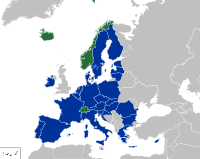
The European Union (blue)
and EFTA countries (green)
Iceland, Liechtenstein, Norway and Switzerland are members of a free trade area (EFTA) developed in parallel to the EU. Most prior members of EFTA left to join the EU and the remaining countries, except Switzerland, formed the European Economic Areawith the EU. None has current aspirations to join the EU, although they (except Liechtenstein) have applied for membership but withdrawn them.
Iceland[edit]
Iceland applied to join the EU in July 2009 following an economic crisis. Prior to that, its relations with the EU were defined by its membership of the European Economic Area (EEA), which gave it access to the EU’s single market and the Schengen Area. As a result of their EEA membership, Iceland already applies many major economic EU laws and negotiations were expected to proceed rapidly (although research by the EFTA Secretariat in 2005 found that only 6.5% of laws had actually been adopted;[139][140] see below for European Commission assessment).
As in Norway, Iceland’s fear of losing control over its fishery resources in its territorial waters was the most important reason for its reluctance to join the EU. However the economic downturn in Iceland accelerated the debate, and theIndependence Party, then the largest opposition party, agreed to the opening of accession negotiations after a referendum (and subject to a further referendum).[141] A proposal to begin negotiations with the EU was put before the Icelandic parliament in July 2009[142] and approved (without a pre-negotiation referendum) by a slim majority on 16 July 2009. Iceland submitted its application to the Swedish presidency in a letter dated 16 July, and the application was acknowledged by the Council of the European Union on 27 July.[143] On 8 September, the EU commission sent Iceland a list of 2,500 questions about its fulfilment of convergence criteria and adoption of EU law. Iceland replied to the commission on 22 October 2009. On 2 November, Iceland selected a chief negotiator for the membership negotiations with the EU: Stefan Haukur Johannesson, Iceland’s Ambassador to Belgium. In February 2010, the European Commissioner for Enlargement and European Neighbourhood Policy recommended to the Council of the European Union to start accession negotiations with Iceland. The European Council decided in June that negotiations should start,[144] and on 17 June 2010 the EU granted official candidate status to Iceland by formally approving the opening of membership talks.[145] On 26 July 2010, European Union foreign ministers formally gave the green light for negotiations to begin and agreed to start the talks on the following day.[146]
The first annual report on the negotiations was published in November 2010;[147] the main issues at stake remained thefisheries sector and whale hunting, while progress had been made concerning the Icesave dispute.[148]
In February 2013, the Icelandic chief negotiator stated that the main driving force for Iceland joining the EU was the benefit to the country of adopting the euro to replace the inflation-plagued Icelandic króna. Iceland’s HICP inflation and related long-term government interest rates were both recorded to be around 6% on average for 2012. Most importantly, however, while the country retained the Icelandic kronur, it was unable to lift the capital controls recently introduced in the turmoil of the economic crisis. Introduction of the euro, a far stronger currency, would allow the country to lift these capital controls and achieve an increased inward flow of foreign economic capital, which ultimately would ensure higher and more stable economic growth. To be eligible to adopt the euro, Iceland would need to join the EU, as unilateral euro adoption had previously been refused by the EU.[149]
On 14 January 2013, the two governing parties of Iceland, the Social Democratic Alliance and Left-Green Movement, announced that because it was no longer possible to complete EU accession negotiations before the parliamentary elections in April 2013, they had decided to slow down the process and the six remaining unopened chapters would not be opened until after the election. However, negotiations would continue for the 16 chapters currently open.[150] The new partyBright Future supports the completion of negotiations,[151] while the other two opposition parties, Independence Party andProgressive Party, argue that negotiations should be completely stopped.[152][153] In February 2013, the national congress of both the Independence Party and Progressive Party reconfirmed their policy that further membership negotiations with the EU should be stopped and not resumed unless they are first approved by a national referendum,[154][155] while the national congresses of the Social Democratic Alliance, Bright Future and Left-Green Movement reiterated their support for the completion of EU accession negotiations.[156] Iceland’s current chief negotiator stated in an interview in February 2013 that if the newly elected parliament supported the continuation of EU membership negotiations, it would be possible to complete negotiations by the spring of 2015, with a referendum on membership to be held after that.[149][157]
Following the April 2013 Icelandic election, the new Icelandic government announced that they were indefinitely extending the previous government’s freeze on EU accession talks, pending a national referendum on the application.[158] On 13 June, Iceland’s Foreign Minister Gunnar Bragi Sveinsson informed the European Commission that the newly elected government intended to “put negotiations on hold”.[159] European Commission President Manuel Barroso responded on 16 July 2013 by requesting that the new Icelandic Prime Minister make a decision on the continuation of their accession bid “without further delay”.[160] Iceland has subsequently dissolved its accession negotiations team.[161] On 12 March 2015, Foreign Minister of Iceland Gunnar Bragi Sveinsson stated that he had sent a letter to the EU withdrawing the application for membership, without the approval of the Althing, though the European Union stated that Iceland had not formally withdrawn the application.[162]
Liechtenstein[edit]

Liechtenstein shown in orange
Liechtenstein is, like Norway and Iceland, a member of the European Economic Area and hence is already heavily integrated with the EU.[163] Seeking to join is not current policy.[163]
Norway is not an EU member state, but adopts some EU legislation as a result of its participation in the European Economic Area (EEA) through the European Free Trade Association (EFTA). Additionally, Norway has chosen to opt into some of the Union’s programmes, institutions and activities.[164] Whether or not the country should apply for full membership has been a dominant and divisive issue. Division within the governing red–green coalition(2005–2013) has blocked the issue since the 2005 parliamentary elections.[citation needed] Norway has applied four times for EEC and EU membership. In 1962 and 1967 France effectively vetoed Norway’s entry,[165] while the later 1972 referendumand the 1994 referendum were both lost by the government.[165][166]
Norway’s application for EU membership has been frozen but not withdrawn. It could be resumed at any time following renewed domestic political will, as happened in the case of Malta.
A major issue for Norway is its fishing resources, which are a significant part of the national economy and which would come under the Common Fisheries Policy if Norway were to accede to the EU.
Norway has high GNP per capita, and would have to pay a high membership fee. The country has a limited amount of agriculture, and few underdeveloped areas, which means that Norway would receive little economic support from the EU. However, as of 2009, Norway has chosen to opt into many EU projects and since its total financial contribution linked to the EEA agreement consists of contributions related to the participation in these projects, and a part made available to development projects for reducing social and economic disparities in the EU (EEA and Norway Grants),[164][167] its participation is on an equal footing with that of EU member states. The total EEA EFTA commitment amounts to 2.4% of the overall EU programme budget.
Norway is a member of the European Economic Area (the EU common market), the Schengen treaty (and was an associate member of the Western European Union until the organisation terminated in 2011), as well as other treaties and agreements normally considered as under the EU umbrella. Norway was a founding member of NATO in 1949.
Switzerland[edit]

Switzerland shown in orange
Switzerland took part in negotiating the EEA agreement with the EU and signed the agreement on 2 May 1992 and submitted an application for accession to the EU on 20 May 1992. A Swiss referendum held on 6 December 1992 rejected EEA membership. As a consequence, the Swiss Government decided to suspend negotiations for EU accession until further notice, but its application remains open. The popular initiative entitled “Yes to Europe!”, calling for the opening of immediate negotiations for EU membership, was rejected in a 4 March 2001 referendum. TheSwiss Federal Council, which is in favour of EU membership, had advised the population to vote against this referendum since the preconditions for the opening of negotiations had not been met. It is thought that the fear of a loss of neutrality and independence is the key issue against membership among Eurosceptics. Switzerland has relatively little amount of land area with agriculture, on which a large part of the EU budget is spent.
EU membership continued to be the objective of the government and is a “long-term aim” of the Federal Council. Furthermore, the Swiss population agreed to their country’s participation in the Schengen Agreement. As a result of that, Switzerland joined the area in December 2008.[168]
The Swiss federal government has recently undergone several substantial U-turns in policy, however, concerning specific agreements with the EU on freedom of movement for people, workers and areas concerning tax evasion have been addressed within the Swiss banking system. This was a result of the first Switzerland–EU summit in May 2004 where nine bilateral agreements were signed. Romano Prodi, former President of the European Commission, said the agreements “moved Switzerland closer to Europe.” Joseph Deiss of the Swiss Federal Council said, “We might not be at the very centre of Europe but we’re definitely at the heart of Europe”. He continued, “We’re beginning a new era of relations between our two entities.”[169]
The Swiss government declared in September 2009 that bilateral treaties are not solutions and the membership debate has to be examined again.[170]
In the Swiss immigration referendum, February 2014, a federal popular initiative “against mass immigration”, Swiss voters narrowly approved measures limiting the freedom of movement of foreign citizens to Switzerland. The European Commission said it would have to examine the implications of the result on EU–Swiss relations.[171] Due to the refusal of Switzerland to grant Croatia free movement of persons, the EU accepted Switzerland’s access to the Erasmus+ student mobility program only as a “partner country”, as opposed to a “programme country”, and the EU has frozen negotiations on access to the EU electricity market. On March 4, 2016, Switzerland and the EU signed a treaty that would extend the accord of the free movement of people to Croatia, something which is expected to lead to Switzerland’s full readmission intoHorizon 2020, a European funding framework for research and development.[172][173]
In March 2016, the Swiss National Council voted to withdraw its suspended application for EU membership.[174][175][176] The motion was passed by the Council of States and is awaiting action by the Federal Council as of June.[177]
Microstates which use the euro[edit]
Within western Europe, there are five microstates: Andorra, Monaco, San Marino, the Vatican City, and Liechtenstein. Liechtenstein is a member of EFTA (see section EFTA states for its details). The other non-EFTA microstates have signed agreements allowing them not only to use the euro, but also to mint their own coins. The non-EFTA microstates are alsode facto part of the Schengen agreement or have a largely open border with the EU and have close relations with their neighbouring state. For example, Monaco is a full part of the EU’s customs territory via France, and applies most EU measures relating to VAT and excise duties.[178]
Close cooperation and inclusion in systems like the Eurozone are offered to them. This does not come without conditions. For example, the EU requires cooperation in tax control in return. Monaco has already implemented the EU Directive on the taxation of savings interest.
Andorra[edit]
In Andorra (the largest European microstate), the government has said that “for the time being” there is no need to join the EU;[179] however, the opposition Social Democratic Party is in favour.
Monaco joined the Council of Europe in 2004,[180] a move that required it to renegotiate its relations with France, which previously had the right to nominate various ministers. This was seen as part of a general move toward Europe.[181] One concern is that, unlike the constitutional monarchies within the EU, the Prince of Monaco has considerable executive powers and is not merely a figurehead.
San Marino[edit]
In San Marino the centrist Popular Alliance has been reported to be in favour of joining the EU, which the rulingSammarinese Christian Democratic Party opposed in 2006.[182] In 2010 the Parliament tasked the government to open negotiations for further integration with the European Union,[183] and subsequently a technical group prepared a report on the topic including the options of EU and EEA membership.[184] A planned referendum on an EU membership application for 27 March 2011 was cancelled by the government.[185] A second referendum was held on 20 October 2013,[186][187] and although voters narrowly approved submitting an application, the percentage of eligible voters supporting the motion was not sufficient to meet the requirements for it to formally pass.[188]
Vatican City[edit]
The Vatican City (the smallest state in the world[189]) is an ecclesiastical[189] or sacerdotal–monarchical[190] state, and as such does not have the democratic credentials to join the EU (Art. 49 TEU) and is unlikely to attain them given its unique status.[citation needed] Additionally its economy is also of a unique non-commercial nature. Overall, the mission of the Vatican City state, which is tied to the mission of the Holy See, has little to do with the objectives of the EU Treaty.[191] Thus EU membership is not discussed, even though it is in the heart of an EU member state.[191]
Eastern Partnership states[edit]

EU Member states
Current Enlargement agenda
Eastern Partnership ENP participants
Other Eastern Partnership states
Since the dissolution of the Soviet Union, the former Soviet republics in Eastern Europeand South Caucasus have been looked upon as potential candidates for EU enlargement. The majority of them are or have been closely linked to Russia and would need to concentrate more on other European partners to attain candidate status. It is expected that these states will remain outside the Union for a significant amount of time, because they are not currently on any enlargement agenda (in contrast to the Western Balkan states, Turkey, and Iceland).
However, a summit in Mamaia, Romania, in May 2004 showed enlargement to be a definite possibility, though only Ukraine and Moldova were present, as Belarus was not concerned with membership.
The South Caucasus states of Armenia, Azerbaijan, and Georgia have been the site of much instability since the 1990s. Their EU membership would be conditional on thepolitical assessment by the European Council about whether they are considered European. Nevertheless, all three states have been admitted as full members into theCouncil of Europe (like Cyprus) after a similar assessment process. Before the first official visit of external relations commissioner Benita Ferrero-Waldner to the three Caucasus states, it was stated that if she were asked about enlargement, she would not rule it out.[192] It is unclear as to when they may move towards membership, even though they are part of the European Neighbourhood Policy and are often referred to as part of “a wider Europe”. Since their only land contact with European states is through Russia and Turkey, it is possible that they would only join after Turkey did so. However, on 12 January 2002, the European Parliament noted that Armenia and Georgia may enter the EU in the future regardless.[193]
The ENP Action Plans adopted by the EU and each individual partner state (Ukraine, Moldova, Georgia, Armenia, Azerbaijan) states that “the EU takes note of expressed European aspirations by the ENP partner”.
In May 2008, Poland and Sweden put forward a joint proposal for an “Eastern Partnership” with Ukraine, Moldova, Armenia, Azerbaijan, and Georgia, with Russia and Belarus participating in some aspects. Eventually, Belarus joined the initiative as a full member, while Russia does not participate at all. The Polish foreign minister Radosław Sikorski said “We all know the EU has enlargement fatigue. We have to use this time to prepare as much as possible so that when the fatigue passes, membership becomes something natural“[194] In May 2009, the Eastern Partnership was inaugurated. Its members include the European Union as well as the post-Soviet states Armenia, Azerbaijan, Belarus, Georgia, Moldova, and Ukraine.
With the inauguration of the second Barroso Commission in February 2010, the European Neighbourhood Policy was transferred from the portfolio of the External Relations Commissioner (replaced by the High Representative) to theEnlargement Commissioner.
A Polish–Swedish authored EU strategy sees the Eastern section of the Neighbourhood policy being split off and combined with the Eastern Partnership. These states would be offered full integration short of membership, but no enlargement would be on the agenda in the short to medium term.[9]
Armenia[edit]
Armenia is geographically located entirely within Western Asia. However, likeCyprus, it has been regarded by many as culturally associated with Europe because of its connections with European society, through a diaspora, its Indo-European language and a religious criterion of being Christian. Armenia is still in conflict over the status of Nagorno-Karabakh (Artsakh) and some surrounding, Armenian-occupied territory, internationally recognised as integral parts of Azerbaijan. Since 1994, a ceasefire has been in place, but tensions remain very high between the two countries. Although the country’s economy had one of the world’s fastest growth rates in the past few years, this comes following a low base and many years of near-continuous recession.[195]
The Metsamor nuclear power plant, which is situated some 40 km (25 mi) west of Yerevan, is built on top of an active seismic zone and is a matter of negotiation between Armenia and the EU. Towards the end of 2007, Armenia approved a plan to shut down the Metsamor plant in compliance with the New European Neighbourhood Policy Action Plan.[196] This is likely to take place by 2016 when the operating term of the Metsamor facility expires.[197]
Several Armenian officials have expressed the desire for their country to eventually become an EU member state,[198] with some predicting an official bid for membership.[199] Public opinion in Armenia suggests the move for membership would be welcomed, with 64% out of a sample of 2,000 being in favour and only 11.8% being against.[200] The EU is Armenia’s largest trading partner and as of January 10, 2013, citizens of the EU will no longer need visas to travel to Armenia. Armenia negotiated an association agreement, including a free trade area, with the EU,[201] but in 2013 Armenia announced plans to instead join the Eurasian Economic Community customs union.[202][203]
Azerbaijan[edit]

Azerbaijan shown in orange
Azerbaijan, a majority-Shia Muslim but secular country with a Turkic population, would need to overcome several obstacles in order to be considered a potential EU candidate. The oil-rich country has made improvements to its infrastructure, but much of the money from its very high GDP growth, one of the world’s fastest, still does not seem to find its way into the lower echelons of society,[citation needed] despite being larger and more technologically modernised than its neighbours Georgia and Armenia. Its economy is also suffering from the “Dutch disease,” as oil is becoming its primary export, rendering the manufacturing sector less competitive.[204]Corruption is a serious issue in Azerbaijan, and recent presidential elections were disputed and have been criticised for not being free, fair or democratic by international observers. Together with Armenia, Azerbaijan also needs to resolve tension concerning the situation of the unilateral declaration of independence of Nagorno-Karabakh and neighbouring territory occupied by Armenia. The EU wishes to see the easing of tensions in the area.
Belarus[edit]
The EU’s relations with Belarus are strained as the EU has condemned the government of Belarus several times for authoritarian and anti-democratic practices, and even imposed sanctions on the country.[205] Under its current president, Belarus has instead sought a close confederation with Russia, short of political reunion. According to the initial ENP plan in 2004 Belarus is considered a potential participant, but not yet ready. Because of warming moves by both sides,[206] Belarus became a member of the Eastern Partnership in 2009 despite its non-participation in the ENP.
Georgia[edit]
Georgia’s former President Mikheil Saakashvili has expressed a desire for Georgia to join the EU. This view has been explicitly expressed on several occasions as links to the United States, EU and NATO have been strengthened in an attempt to move away from the Russian sphere of influence. Territorial integrity issues in Ajaria were dealt with after the Rose Revolution, when leader Aslan Abashidze was forced to resign in May 2004. However, unresolved territorial integrity issues have again risen to the forefront in South Ossetia and Abkhazia as a result of the 2008 South Ossetia War.
On 11 November 2010, Georgian Deputy Prime Minister Giorgi Baramidze announced that Georgia wants to cooperate with Ukraine in their attempt to join the European Union.[207]
The EU and Georgia began a visa liberalisation dialogue to allow for visa free travel of Georgian citizens to the European Union. The action plan was delivered to Georgia on 25 February 2013.[208]
A ceremony on the initialling of an Association Agreement between Georgia and the European Union was held on 29 November 2013.[209] The agreement was signed in June 2014.[210] At the signing ceremony, Georgian Prime Minister Irakli Garibashvili called the agreement a “road map” towards further integration and eventual membership in the European Union.[210]
The European Parliament passed a resolution in 2014 stating that “in accordance with Article 49 of the Treaty on European Union, Georgia, Moldova and Ukraine, as well as any other European country, have a European perspective and can apply for EU membership in compliance with the principles of democracy, respect for fundamental freedoms and human rights, minority rights and ensuring the rule of rights.”[211]
Moldova[edit]
In August 2009, four Moldovan parties agreed to create a governing coalition, calledAlliance for European Integration, which made European integration a priority. The government is implementing its first three-year action plan within the framework of the European Neighbourhood Policy (ENP) of the EU. The Partnership and Cooperation Agreement (PCA) represents the legal framework for the Republic of Moldova—European Union relationship.[212] The agreement was signed on 28 November 1994 and entered into force on 1 July 1998 for the next 10 years. This arrangement provides for a basis of cooperation with the EU in the political, commercial, economic, legal, cultural, and scientific areas. The EU is developing an increasingly close relationship with Moldova, going beyond co-operation, to gradual economic integration and a deepening of political co-operation. In 6 October 2005, the EU opened its permanent mission in Chișinău, the capital city of Moldova. Moldova gained visa-free regime with Schengen states on 28 April 2014.[213] An Association Agreement with the European Union was signed in June 2014.[210]
In April 2014, whilst visiting the Moldovan-Romanian border at Sculeni, Moldovan Prime Minister Iurie Leanca stated; “We have an ambitious target but I consider that we can reach it: doing everything possible for Moldova to become a full member of the European Union when Romania will hold the presidency of the EU in 2019”.[214] Some political parties within both Moldova and Romania advocate a merging of the two countries. Such a scenario would incorporate the current territory of Moldova into Romania and thus into the EU.[215][216]
The integration process, however, has been hampered by many internal issues. The unresolved issue of the breakaway republic of Transnistria is a major barrier to any progress. Also, Moldova’s autonomous region of Gagauzia held two referendums on February 2, 2014 where an overwhelming majority of voters rejected integration with the EU and opted for closer ties with Russia.[217]
Ukraine[edit]
Many political factions of Ukraine advocate joining the EU and developing ties with Europe. Since the Orange Revolution of late 2004, Ukraine’s membership prospects have improved. The then opposition leader Viktor Yushchenko hinted that he would press the EU for deeper ties, and described a four-point plan: the acknowledgment of Ukraine as a market economy, entry in the World Trade Organisation, associate membership with the EU, and lastly full membership.[218] However, following ambiguous signals from the EU, Ukrainian President Yushchenko responded to the apathetic mood of the Commission by stating that he intended to send an application for EU membership “in the near future”. In September 2009 two Ukrainian diplomats, backed by a number of others, argued that Ukraine should submit a formal application for membership in 2010 in order to get a clearer message from Brussels,[219] however it was never lodged.[220] Public support in Ukraine for EU membership regularly polls higher than opposition. In a December 2012 poll by Razumkov Center, support had grown to 48% while the “against” had shrunk to 10.5% (32% supported Ukraine’s accession to the Customs Union of Belarus, Kazakhstan and Russia).[221]
Inside the EU, opinion is split. Several EU leaders have already stated strong support for closer economic ties with Ukraine but have stopped short of direct support for such a bid. In 2005, Polish Foreign Minister Adam Daniel Rotfeld noted that Poland will in every way promote Ukraine’s desire to be integrated with the EU, get the status of a market-economy country and join the WTO. Portugal also publicly stated it supports Ukraine’s EU accession.[222] On 13 January 2005 the European Parliament almost unanimously (467 votes to 19 in favour) passed a motion stating the wish of the Parliament to establish closer ties with Ukraine with the possibility of EU membership. A 2005 poll of the six largest EU nations showed that the European public would be more likely to accept Ukraine as a future EU member than any other country that was not currently an official candidate. In 2002, then-Enlargement Commissioner Günter Verheugen said that “a European perspective” for Ukraine does not necessarily mean membership in 10 or 20 years, however, that does not mean it is not a possibility. The European Commission has stated that future EU membership will not be ruled out and in 2005 Commission President José Manuel Barroso said that the future of Ukraine is in the EU. Late 2005 then-Enlargement Commissioner Olli Rehn stated that the EU should avoid overstretch, adding that the enlargement agenda at the time was already very heavy.[223] In September 2011 European Commissioner for Enlargement and European Neighbourhood Policy Štefan Fülerefused to include “Ukraine’s prospects for membership of the European Union” in the European Union Association Agreement between the EU and Ukraine.[224] At the 16th[225] EU-Ukraine summit of 25 February 2013 a joint statement of Ukraine and the EU “reaffirmed their cooperation on political association and economic integration of Ukraine with the European Union on the basis of respect for shared values and their effective promotion”.[226] Ukrainian and EU officials convened in Yalta in September 2013 for a summit[227] at which the issue of jailed opposition leader and former Prime Minister Yulia Tymoshenko‘s incarceration appeared to be a sticking point between President Viktor Yanukovych and EU leaders.[228] Even still, Ukrainian officials received encouragement from Polish Foreign Minister Radoslaw Sikorski to sign a free trade and political association agreement with the EU.[229]
During a summit in November 2013, Ukraine refused to sign their Association Agreement with the EU, due to Russian pressure.[230] President Yanukovych described the agreement as disadvantageous for Ukraine. This sparked massive pro-EU protests, with thousands of people chanting “Ukraine is Europe”, that ultimately led to the fall of the Ukrainian government. EU Commission President José Manuel Barroso later said “We are embarked on a long journey, helping Ukraine to become, as others, what we call now, ‘new member states’. But we have to set aside short-term political calculations.” [231] On 27 February 2014 the European Parliament passed a resolution that recognised Ukraine’s right to “apply to become a Member of the Union, provided that it adheres to the principles of democracy, respects fundamental freedoms and human and minority rights, and ensures the rule of law”.[232][233] In March 2014, the interim Ukrainian government signed the “core elements” of the Association Agreement with the EU, but parts of the agreement concerning free trade were left out of the deal pending May elections.[234] Following the election, new President Petro Poroshenkosigned the agreement,[210] which he described as Ukraine’s “first but most decisive step” towards EU membership.[235] Later that year Poroshenko set 2020 as a target for an EU membership application.[10] In March 2016, President of the European Commission Jean-Claude Juncker stated that it would take at least 20–25 years for Ukraine to join the EU and NATO.[236]
Other states with European territory[edit]

Ex-Soviet republics outside EaP with some European territory
Kazakhstan[edit]
The Partnership and Cooperation Agreement (PCA) with Kazakhstan has been the legal framework for EU–Kazakhstan bilateral relations since it entered into force in 1999.[237]“Kazakhstan has a westward extension, which makes a strong case geographically for its European Neighbourhood status.”[238]In 2009, the ambassador of Kazakhstan to Russia, Adilbek Dzhaksybekov said “We would like to join in the future the European Union, but to join not as Estonia and Latvia, but as an equal partner”.[239] This statement is mostly visionary and about long term perspective, because currently Kazakhstan is not even participating in the European Neighbourhood Policy (ENP) although the Kazakh Foreign Ministry has expressed interest in the ENP. MEP Charles Tannock has suggested Kazakhstan’s inclusion in the ENP, while emphasizing that “there are still concerns regarding democracy and human rights in Kazakhstan”.[238]
During the preparation stages of the ENP, Russia insisted on the creation of the four EU-Russia Common Spaces instead of ENP participation, as it saw the ENP as “unequal” arrangement with a dominant role of the EU.[240] In the framework of the EU-Russia Common Spaces in May 2005, a roadmap was adopted with similar content to the ENP Action Plans. Both the ENP and the EU-Russia Common Spaces are implemented by the EU through the European Neighbourhood and Partnership Instrument.
Among the most vocal supporters of Russian membership of the EU has been former Italian Prime Minister Silvio Berlusconi; in October 2008 he said “I consider Russia to be a Western country and my plan is for the Russian Federation to be able to become a member of the European Union in the coming years” and stated that he had this vision for years.[241] Russian permanent representative to the EU Vladimir Chizhov commented on this by saying that Russia has no plans of joining the EU.[242] Russian Prime Minister Vladimir Putin has said that Russia joining the EU would not be in the interests of either Russia or the EU, although he advocated close integration in various dimensions including establishment of four common spaces between Russia and the EU, including united economic, educational and scientific spaces as it was declared in the agreement in 2003.[243][244][245][246]
At present, the prospect of Russia joining the EU any time in the near future is slim. Former German Chancellor Gerhard Schröder has also said that though Russia must “find its place both in NATO, and, in the longer term, in the European Union, and if conditions are created for this to happen” that such a thing is not economically feasible in the near future.[247]
States outside Europe[edit]
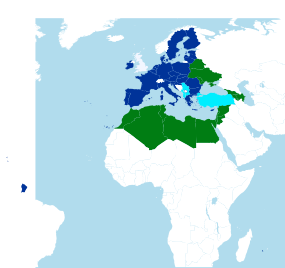
EU neighbouring countries:
European Union
Official candidates
In the Treaty of Maastricht (Article 49), it is stated that any European country (as defined by the EU political assessment) that respects the principles of the European Union may apply to join. No mention is made of enlarging the EU to include non-European countries, though an exception has been made for Cyprus and has been envisioned by some for states such as Armenia, and the precedents of turning downMorocco‘s application and defining Israel‘s closest integration as “just short of full membership” suggest that currently states outside geographic Europe are unlikely to obtain full EU membership.[citation needed]
Despite such precedents, Cape Verde has expressed its desire to join the EU.[248][249][250]
However, some non-European states have different degrees of integration with the EU stipulated by agreements, always short of membership. Alternatively such countries could be integrated into a larger regional block or an overlapping block such as Nicolas Sarkozy‘s proposal to create a Mediterranean Union, or a lesser organisation such as theEuro-Mediterranean free trade area. The current frameworks for development of such agreements are the Barcelona process and the European Neighbourhood Policy.
In 2005 and 2006, it had been speculated that Canada could, and some said should,[251][252][253] join the European Union, even though Canada is not located in Europe.
Cape Verde[edit]
Cape Verde is an island nation of the Atlantic Ocean and a former Portuguese colony. In March 2005 former Portuguese president Mário Soares launched a petition urging the European Union to start membership talks with it, saying that Cape Verde could act as a bridge between Africa, Latin America and the EU.[254][255]
Cape Verde’s per capita GDP is lower than any of the current member states, accession countries, or candidate countries. Most of the imports and exports of Cape Verde are from and to the European Union, and it has a service-based economy. Its currency, the escudo, is pegged to the euro.
Although the Cape Verde archipelago is geographically in Africa, there have been similar situations before. Cyprus is an island nation which, despite being geographically in Asia, has already joined both the Council of Europe and the EU. Furthermore, the Cape Verde islands are part of the same island group as the Canary Islands (part of Spain), Madeira Islands and the Azores Islands (part of Portugal), known as Macaronesia. There is currently no political recognition by the EU of Cape Verde as a European state, but unlike in the case of Morocco, there is no formal rejection either.
Recently Cape Verde has been distancing itself from its regional African partners[citation needed] and forging closer ties with the EU. In a move signaling its preparation to loosen ties with the West African regional bloc,[citation needed] the government of Cape Verde in September 2006 declared its intentions on suspending the ECOWAS free movement of goods and trade. Prime Minister José Maria Neves announced that his country will start imposing restrictions on the entrance of citizens from all ECOWAS member states. This is also an effort to limit the recent rise of illegal immigration of other West African nationals using Cape Verde and its proximity to the Canary Islands as a springboard towards Europe.
The principle of Israel joining the European Union has been supported by some politicians in both Israel and Europe, including the former Israeli Foreign Minister, Silvan Shalom,[256] former Israeli Minister of Foreign Affairs Avigdor Lieberman[257] and former Italian Prime Minister, Silvio Berlusconi.[258] Two Italian MEPs campaigned in favour of Israeli membership as recently as 2006.[259] A 2004 opinion poll showed that 85% of Israelis would support an application for membership.[260] Another survey in 2011 showed support for EU membership is 81%.[261]
The Israeli government has hinted several times that an EU membership bid is a possibility, but the EU itself proposes instead the closest possible integration “just short of full membership.” Faster advancement of such plans is somewhat hampered by the current instability in the Middle East and conflicts in the West Bank, Gaza Strip, and Lebanon. European public opinion of some of Israel’s policies, especially those related to the aforementioned areas of conflict is, in general, poor.[262]
The European Council has not been asked to take a stance regarding whether or not Israel is a European state, but similar circumstances to Morocco (being geographically outside Europe and without exceptional features such as CoE membership) will most likely preclude its inclusion as a full member into the EU as well. However, it can obtain a large degree of integration through the current and future EU Neighbourhood Policies – the former Spanish foreign ministerMiguel Ángel Moratinos spoke out for a “privileged partnership, offering all the benefits of EU membership, without participation in the institutions”. On 11 January 2005, industry commissioner and vice president of the commission Günter Verheugen even suggested the possibility of a monetary union and common market with Israel.
An argument[263] for the inclusion of Israel into the EU as a full member is that it has a partly “European” culture, as a significant number of Israelis are Jews who immigrated to Israel from Europe (and their descendants). Israel also has a GDP per capita similar to many richer European countries. Some claim that allowing Israel into the EU would create a precedent for other geographically non-European countries to apply for membership, but in fact[264] this precedent already exists as Cyprus, which is already a member state, is geographically in Asia. Proponents of Israel’s accession to the EU claim that Israel’s situation is similar to that of Cyprus—a country outside of Europe geographically, but a part of Europe culturally and socially.[citation needed]
In 2014, former Spanish Prime Minister José María Aznar said Israel is needed by the European Union, in an address at the British House of Commons. Aznar said his report recommends that due to its Western culture and the benefits it brings the European Union, Israel should become a full member of the EU without pre-conditions.[265]
However, a growing number of EU member states have begun to grant formal recognition to the State of Palestine meaning Israel may oppose EU membership, or EU members may oppose the integration of Israel on political and cultural grounds.[266]
Morocco[edit]
Morocco submitted an application to join the EU (then EEC) in July 1987, but it was rejected by the European Council later in the year on the grounds that it “did not consider Morocco a European country”. Although there are factors such as the developing economy or unresolved border issues with several of its neighbours and the conflict over Western Sahara, aEuropean Union Association Agreement similar to that applied to Tunisia and Algeria is implemented between Morocco and the EU. The Moroccan government argues that a “substantial” amount of its territory is already part of the European Union, specifically Spanish enclaves in Northern Africa that Morocco says are occupied territory.[citation needed]
Special territories of member states[edit]
There are multiple Special member state territories, some of them are not fully covered by the EU treaties and apply EU law only partially, if at all. It is possible for a dependency to change its status regarding the EU and/or some particular treaty or law provision. The territory may change its status from participation to leaving or from being outside to joining.
British dependencies[edit]
- British Overseas Territories
The only country with the status of British Overseas Territory that is part of the EU is Gibraltar, which joined the EEC together with the United Kingdom in 1973. The other overseas territories are defined as Overseas Countries and Territories of the EU. All of them are associated with the EU (meaning they apply some parts of EU law) and their nationals are in principle EU citizens.[267]
- Crown Dependencies
Special terms were negotiated for the Channel Islands and the Isle of Man on the UK’s accession to the European Economic Community. These are contained in Protocol 3 to the Treaty of Accession 1973. The effect of the protocol is that the Channel Islands and the Isle of Man are within the Common Customs Area and the Common External Tariff (i.e. they enjoy access to European Union countries of physical exports without tariff barriers). Other Community rules do not apply to the Islands.
- Sovereign Base Areas
The UK Sovereign Base Areas, Akrotiri and Dhekelia on Cyprus did not join the European Union when the United Kingdom joined. Cyprus’ Accession Treaty specifically stated that this would not change with the accession of Cyprus to the European Union. However, currently, some provisions of the EU Law are applicable there—mainly border management,food safety and free movement of people and goods.
Danish self-governing communities[edit]
- Faroe Islands
The Faroe Islands, a self-governing nation within the Kingdom of Denmark, are not part of the EU, as explicitly asserted by both Rome treaties.[268] The relations with the EU are governed by a Fisheries Agreement (1977) and a Free Trade Agreement (1991, revised 1998). The main reason for remaining outside the EU is disagreements about the Common Fisheries Policy,[269] which disfavours countries with large fish resources. Also, every member has to pay for the Common Agricultural Policy, which favours countries having much agriculture which the Faroe Islands does not.
Nevertheless, there are politicians, mainly in the right-wing Union Party (Sambandsflokkurin), led by their chairman Kaj Leo Johannesen, who would like to see the Faroes as a member of the EU. However, the chairman of the left-wing Republic(Tjóðveldi), Høgni Hoydal, has expressed concerns that if the Faroes were to join the EU as is, they might vanish inside the EU, comparing this with the situation of the Shetland Islands and Åland today, and wants the local government to solve the political situation between the Faroes and Denmark first.[270]
- Greenland
Greenland, a self-governing community that is part of the Kingdom of Denmark, held a second referendum on membership after the establishment of Greenland’s home rule in 1979 (effective from 1980). The result was to leave, so on 1 February 1985, Greenland left the EEC and EURATOM. Its status was changed to that of an Overseas Country.[267] Danish nationals residing in Greenland (i.e. all native population) are nonetheless fully European citizens; they are not, however, entitled to vote in European elections.
There has been some speculation as to whether Greenland may consider rejoining the European Union. On 4 January 2007 the Danish daily Jyllands-Posten quoted the former Danish minister for Greenland, Tom Høyem, as saying “I would not be surprised if Greenland again becomes a member of the EU… The EU needs the Arctic window and Greenland cannot alone manage the gigantic Arctic possibilities”.[271] Greenland has a lot of natural resources, and Greenland has contracted private companies to exploit some of them, but the cost is considered too high, as Greenland is remote and severely lacks infrastructure.
Dutch constituent countries and special municipalities[edit]
The islands of Aruba, Curaçao, and Sint Maarten are constituent countries of the Kingdom of the Netherlands, whileBonaire, Sint Eustatius and Saba are special Dutch municipalities. All are Overseas Countries and Territories (OCT) under Annex II of the EC treaty.[267] OCTs are considered to be “associated” with the EU and apply some portions of EU law. The islands are opting to become an Outermost Region (OMR) of the EU, the same status the Azores, Madeira, the Canary Islands and the French overseas departments have.
When Bonaire, Sint Eustatius and Saba were established as Dutch public bodies after the dissolution of the Netherlands Antilles (which was an OCT) in 2010, their status within the EU were raised. Rather than change their status from an OCT to an outermost region, as their change in status within the Netherlands would imply, it was decided that their status would remain the same for at least five years. After those five years, their status would be reviewed.
If it was decided that one or all of the islands wish to integrate more with the EU then the Treaty of Lisbon provides for that following a unanimous decision from the European Council.[272] Former European Commissioner for Enlargement Danuta Hübner has said before the European Parliament that she doesn’t expect many problems to occur with such a status change, as the population of the islands is only a few thousand people.
French overseas departments and territories[edit]
The territories of French Guiana, Guadeloupe, Martinique, Mayotte and Réunion are overseas departments of France and at the same time mono-departmental overseas regions. According to the EC treaty (article 299 2), all of these departments are outermost regions (OMR) of the EU—hence provisions of the EC treaty apply there while derogations are allowed. The status of the Overseas collectivity of Saint-Martin is also defined as OMR by the Treaty of Lisbon. New Caledonia and the overseas collectivities of French Polynesia, Saint-Barthelemy, Saint Pierre et Miquelon and Wallis and Futuna are Overseas Countries and Territories of the EU.[267]
- New Caledonia
New Caledonia is an overseas territory of France with its own unique status under the French Constitution, which is distinct from that of overseas departments and collectivities. It is defined as an “overseas country” under the 1998 Nouméa Accord, and enjoys a high degree of self-government.[273] Currently, in regard to the EU, it is one of the Overseas Countries and Territories (OCT).
As a result of the Nouméa Accord, New Caledonians will vote on an independence referendum scheduled between 2014 and 2019. This referendum will determine whether the territory remains a part of the French Republic as a “sui generis collectivity”, or whether it will become an independent state. The accords also specify a gradual devolution of powers to the local New Caledonian assembly.
Northern Cyprus[edit]

Area shown in orange under control of Northern Cyprus
Officially, the island nation Cyprus is part of the European Union, under the de jure sovereignty of the Republic of Cyprus. Turkish Cypriots are citizens of the Republic of Cyprus and thus of the European Union, and were entitled to vote in the 2004 European Parliament election (though only a few hundred registered). The EU’s acquis communautaire is suspended indefinitely in the northern third of the island, which has remained outside the control of the Republic of Cyprus since the Turkish invasion of 1974. The Greek Cypriotcommunity rejected the Annan Plan for the settlement of the Cyprus dispute in a referendum on 24 April 2004. Had the referendum been in favour of the settlement proposal, the island (excluding the British Sovereign Base Areas) would have joined the European Union as the United Cyprus Republic.
The European Union’s relations with the Turkish Cypriot Community are handled by the European Commission‘sDirectorate-General for Enlargement.[274]
Secession from a member state[edit]
There have been and are a number of active separatist movements within member states, for example in Catalonia,Flanders, the Basque Country and Scotland. If such a movement resulted in independence for a region, the newly created state may wish to become a member of the EU.
In December 2012, the president of the European Commission José Manuel Barroso stated, in the context of the 2014 referendum for independence in Scotland, that any new independent country would have to apply for membership and negotiate its terms, but that the rest of the original country (UK) would not have to re-negotiate its position and would continue its membership.[275][276]
The current EU treaties do not contain any provisions for secessionist scenarios but it is expected that if a seceding province/country re-applied for EU membership, admission would need to be approved unanimously by existing members.[277]
Precedents[edit]
There are no precedents for a region seceding from an existing member state becoming a separate member state of the EU, though some areas have left the EU/EEC for autonomy or full independence without desiring to rejoin.
Algeria is the only region or territory of an existing member state to leave the EU/EEC upon becoming an independent state. Prior to 1962, it was an overseas department of France, an outermost region in EEC terminology,[278] and has not attempted to join the EEC/EU after independence.
Greenland voted to leave the EEC (the predecessor to the EU) after gaining greater autonomy from Denmark in 1982. However, the similarity between this and other proposed scenarios is disputed.[279]
Saint Barthélemy left the EU in 2012. This change in status (from “overseas countries and territories” to “outer-most regions”) was made possible by a provision of the Lisbon Treaty which allows the European Council to change the EU status of a Danish, Dutch or French territory on the initiative of the member state concerned.[Footnote 1][280][281]
Possible future scenarios[edit]
Catalonia[edit]
Since the announcement by the Catalan Prime-Minister Artur Mas in December 2012 that a referendum would be held on Catalan independence, different scenarios regarding the status of Catalonia in the European Union have been proposed. Similar to the situation with the Scottish referendum, the executive has argued that Catalonia will be a successor state to the Kingdom of Spain and hence would automatically continue as a member of the European Union. The Spanish Prime-Minister Mariano Rajoy argues that Catalonia would need to re-apply for admission to the EU. On a European level, Spanish EU Commissioner Joaquin Almunia said in 2013 that Catalonia would have to apply for EU membership in the event of secession from Spain.[282] A similar position was expressed by the European Commission President José Manuel Barroso.
Flanders[edit]
In case of a Flemish secession from Belgium, the future status of Brussels (the de facto capital of the EU) could be unclear. There are various proposals for what should happen to the city, ranging from staying part of the Belgian rump state, to joining the hypothetical Flemish state, to becoming a separate political entity. In the latter case, how much sovereignty Brussels would have also varies, ranging from as a member state with heavy involvement and subsidy from the EU to becoming an EU capital district analogous to Canberra, Brasília, Mexico City, or Washington, D.C..[283][284]
Scotland[edit]
During the campaigns around the 2014 independence referendum in Scotland, there was debate over what would happen to an independent Scotland’s EU membership. The Scottish Government, leading the campaign for independence, claims that Scotland could continue its membership of the EU after an expedited period of negotiations, and inherit the UK’s opt-outs of the euro and the Schengen Agreement because of the Vienna Convention on Succession of States in respect of Treaties (VCSS), adopted 1978.[285][286][287] However, some commentators and academic analyses have rejected this claim.[288][289][290]
Borgen (2010) argues that the case based on the VCSS is “difficult to sustain.”[285] Murkens (2002) and Borgen (2010) point out that the VCSS is not applied if it would be (quoting the original convention) “incompatible with [the] object and purpose of the treaty or would radically change the conditions of its operations”, which would be the case with the Treaty of Rome as a new member state would require voting rights in the Council of Ministers and seats in the European Parliament,etc.[285][291] The VCSS is also only ratified by twenty-two parties and not by most of the EU states.[285] James (2008) argues that, in addition to these points, whatever the legal argument, the realpolitik of the situation is such that it would be difficult for a newly independent Scotland “to force its way into the European Union against the wishes of a sizeable number of its members […]. This is more a matter of power politics than law”.[290]
Since then, a number of legal experts and politicians have voiced their opinion on either side of the divide. Graham Avery,David Scheffer, Lucinda Creighton, and James Crawford are among those who agree that Scotland would be able to negotiate its continued EU membership by the Scottish Government’s planned date of independence in 2016.[292][293][294]However, Avery also contradicted Salmond’s claims that an independent Scotland would not have to sign up to the euro and the Schengen Agreement.[295] The UK Government, citing individuals including José Manuel Barroso, president of the European Commission, said that “the remainder of the UK would continue to exercise the UK’s existing international rights and obligations and Scotland would form a new state”.[295] In response, the Deputy First Minister for Scotland, the SNP’sNicola Sturgeon, said that the SNP government did not agree an independent Scotland would have to reapply for EU membership.[275]
Former European Court judge, Professor Sir David Edward, argued in a December 2012 paper [296] that both Barroso and the SNP were incorrect. Given the situation would be unprecedented and the absence of any express provision in existing EU treaties on how to handle the situation, he stressed the “obligations of good faith, sincere cooperation and solidarity” in the EU treaties, arguing that lengthy negotiations would have to take place but that these would do so prior to the date of independence and that they would lead to a treaty amendment rather than an accession treaty.[297]
Roland Vaubel, a member of the Advisory Council to the German Federal Ministry of Economics and Technology, published a paper in May 2013 titled The Political Economy of Secession in the European Union, which stated that Scotland would remain a member of the European Union upon independence. The paper suggested that there would need to be a negotiation between the Scottish Government and the British Government on “how they wished to share the rights and obligations of the predecessor state”. Vaubel also stated that Barroso’s comments on the status of Scotland after independence “has no basis in the European treaties”.[298]
Professor Lars Bo Kaspersen, Head of Political Science at the University of Copenhagen, said that he believed independence “could be a fairly quick transition”. He continued: “I’m sure that the European Union in general would strongly support Scottish membership and the same goes for NATO. I can’t think of anyone who wouldn’t think it was a good idea.”[299]
In November 2013, the Spanish Prime Minister, Mariano Rajoy, stated that an independent Scotland’s entry to the EU would require the consent of all the existing members and that an independent Scotland or other regions gaining independence would end up outside of the EU.[300]
The referendum rejected independence, leaving the matter theoretical.




